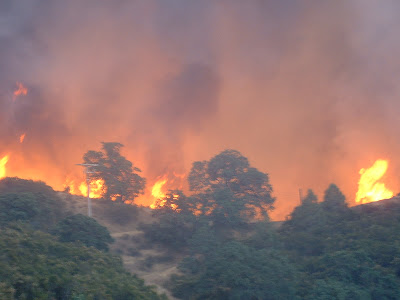
4,755 gallon Close Support Tanker For Water
Cab Seating:3-person
Axle Configuration: 6x6
Curb Weight (VCW): 28,000 lbs (12,700 kg)
Gross Combined Weight Rating: (GCWR): 122,000 lbs (55338 kg)
Fifth Wheel Vertical Loading: 32,000 lbs (14515 kg)
Length: 297.4 in. (7554 mm)
Width: 98 in. (2489 mm)
Height: 140 in. (3556 mm) Reducible to 98 in.
(2489 mm) with preparation
Track: 80.8 in. (2052 mm)
Wheelbase: 184 in. (4674 mm)
Maximum Speed: 65 mph (105 km/h)
Tires: 16.00R20 XZL Michelin
Wheels: 20 in. x 10 in. (508 mm x 254 mm) two piece bolt
together, steel disc
Central Tire Inflation System: Standard
Fifth Wheel: Fully oscillating with 2 in. SAE kingpin capability
(3.5 in. optional)
Fuel Capacity: 78 gal. (295 liters)
Cruising Range: 300 mi. (483 km)
Fording: 60 in. without kits (1524 mm)
Transportability: •C5, C17, and C141 aircraft (w/preparation)
• CH53 Helicopter at VCW
• Shipboard crane loading at VCW
Engine:
Caterpillar®, C-12 electronic control, 425 HP
Transmission:
Allison 4700SP, automatic electronic control
Transfer Case:
Oshkosh 30000 Series
Suspension:
Oshkosh TAK-4™ independent suspension system
Electrical System:
24 volt vehicle with 12 volt/10 amp accessory
in cab, 12/24 volt trailer attachment, 150 amp alternator
Brakes:
Anti-Lock Brake System with automatic traction control
Steering:
All wheel mechanical steer
Turning Diameter:
60 ft. curb to curb
Axles:
(2) BPW Model 10110 E36.1 Eco Plus tubular non-driving axles
2 x 22,046 lb. rating
82.5 in. track width
Brakes, Service:
BPW S-Cam, air-operated, drum type brakes with internal shoe
Brakes, Parking and Emergency:
BPW S-Cam spring brakes on first axle
Interlocked with pumping system
16.5 x 7.9 in.
Gross Weight:
58,422 lbs.
Electrical System:
24-volt with road legal lighting and convoy lights
Kingpin:
SAE 3.5-inch (89 mm) dia. with a 70.7 in. design height
Pumping Module:
Self-priming stainless steel centrifugal water pump
264.2 gal./min. capacity
Piping:
Stainless steel, welded construction with flanged
or threaded connections
Trace heating elements on manifold prevent freezing
Self-cleaning
Manhole:
(2) 19.7 in. dia. hinged fill covers
Overall Length: 408.3 in.
Suspension: BPW air suspension on two axles
Tank:
4,755 gal. capacity, single compartment tank with two lateral
baffles and two longitudinal baffles
Cylindrical and conical sections with domed ends constructed
of cold-rolled AISI 316L stainless steel with a .18 in. tank shell
Contents gauge with external reading display is standard
Insulation: 4 inches surrounding tank, stainless steel clad
Tires:
Michelin® 16.00 R20 XZL
One spare






























